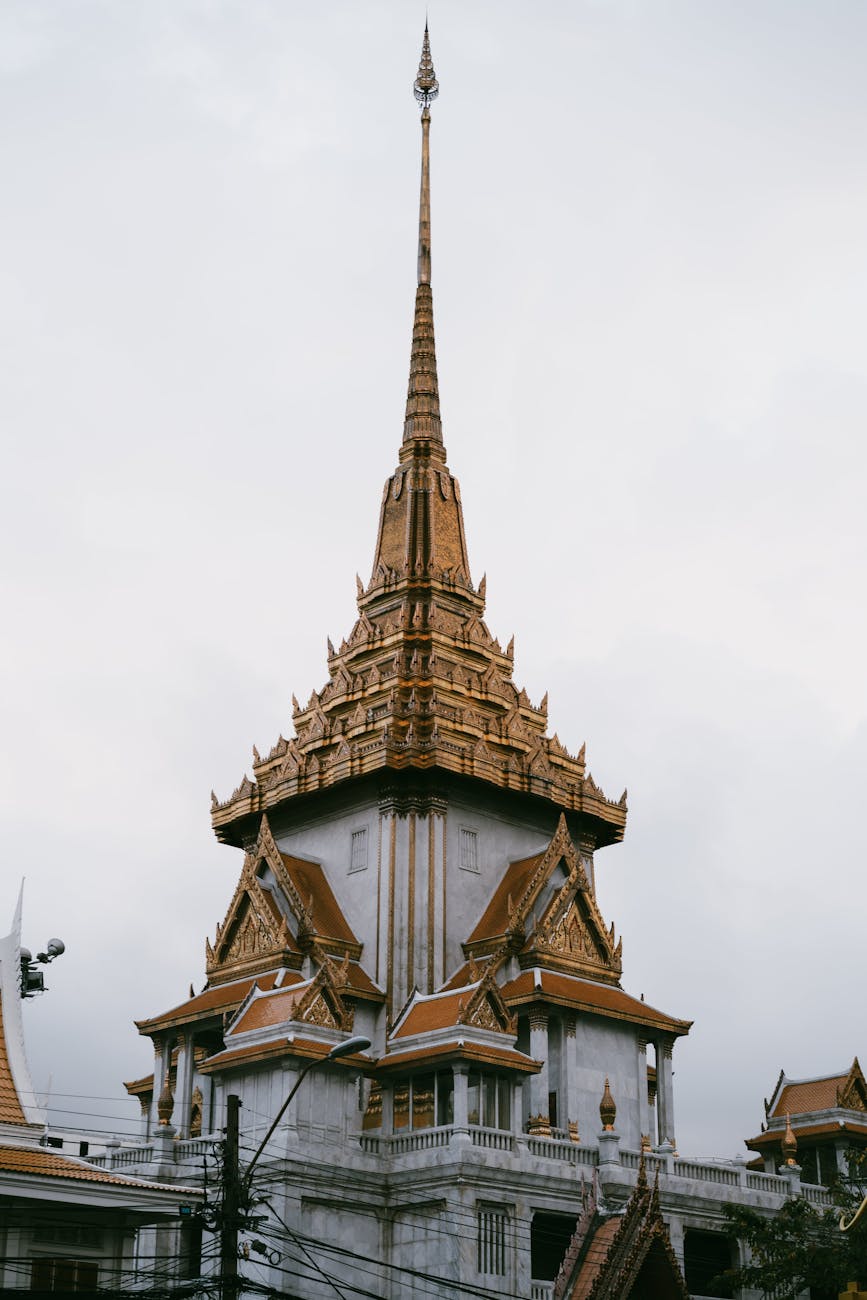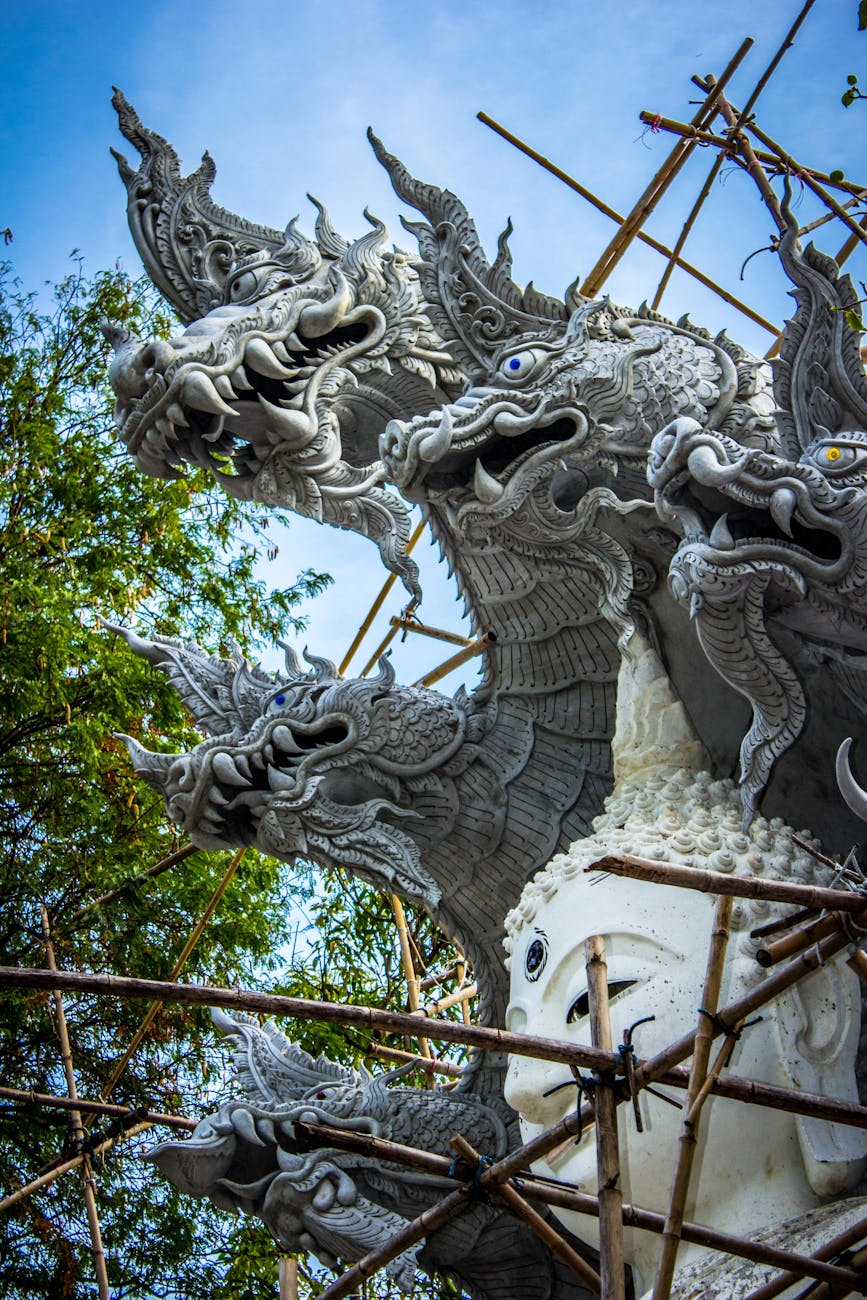Embarking on a journey to Thailand is not just about breathtaking beaches and vibrant nightlife; it is also about immersing oneself in a rich tapestry of culture. One of the most compelling aspects of Thai culture is its Folk Art, a vibrant reflection of traditions and stories that have persisted through generations. This blog post will delve into why experiencing Thai Folk Art should be at the top of your itinerary. From stunning crafts to lively performances, the enchanting world of Folk Art is a journey you won’t want to miss.
Throughout this post, we will explore various facets of Thai Folk Art, including its historical significance, different forms, and where to experience it firsthand. We will also offer valuable insights into incorporating Folk Art experiences into your travel plans, ensuring that you not only enjoy Thailand’s beauty but also its cultural depth. Join us as we unravel the layers of creativity that define this extraordinary part of Thailand.
Table of Contents
- Historical Significance of Thai Folk Art
- Various Forms of Thai Folk Art
- Where to Experience Thai Folk Art
- Incorporating Folk Art into Your Travel Itinerary
- Embracing the Essence of Thai Folk Art
Historical Significance of Thai Folk Art
The roots of Thai Folk Art run deep, tied closely to the country’s history and folklore. Each piece often tells a story, encapsulating the essence of Buddhist teachings, Thai mythology, and daily life in rural communities. As you encounter intricate fabrics adorned with spiritual motifs or vivid murals depicting tales of legendary figures, you will begin to appreciate how art functions as a narrative medium—preserving historical insights that otherwise might fade with time. Moreover, these art forms often highlight Thailand’s connections to nature and spirituality, serving as a visual dialogue between the earth and the divine. By understanding the historical context behind these creative expressions, travelers can gain a richer perspective on Thailand’s cultural identity and the enduring traditions that shape it.
In a world constantly in flux, Thai Folk Art serves as a time capsule, resonating with values that are both timeless and universal. Consider the use of bamboo weaving in creating everyday items, which not only showcases traditional craftsmanship but also strengthens ties to nature and sustainability. This intermingling of environment and art invites onlookers to reflect on the importance of preserving their cultural heritage while adapting to modern influences, making it not only a relevant aspect of Thailand’s identity but also a source of inspiration for personal reflection on one’s roots and origins.
Various Forms of Thai Folk Art
When exploring the landscape of Thai Folk Art, you will discover a dazzling array of forms, each with its own history and significance. Traditional puppet theater, known as ‘Nang Yai’, elevates storytelling into an art form that brings legends to life, using intricately designed puppets crafted by skilled artisans. Then there is the vibrant and colorful style of Thai fabric art, including handwoven textiles that feature elaborate patterns and motifs, embodying the soul of various Thai communities. The precise techniques and applications of these art forms often signify deeper meanings; for example, specific colors and symbols may represent fortune, protection, and prosperity.
Further enriching the Folk Art tapestry are unique styles like ‘Khon’ dance, showcasing tales of the Ramayana through graceful movement and elaborate costumes. These dances do not merely entertain but also serve as a vehicle for cultural transmission, teaching younger generations about their heritage and the messages embedded within those tales. Observing such art forms in their authentic context fosters an appreciation for the skill and dedication of Thai artisans, revealing the love and passion that goes into each creation. Ultimately, the diverse expressions of Thai Folk Art create a holistic picture of the country’s culture, inviting travelers to engage fully with the narrative of the nation.
Where to Experience Thai Folk Art
Finding the best locations to experience Thai Folk Art is crucial for any traveler wishing to dive deeper into the country’s cultural heritage. One of the prime destinations for Folk Art aficionados is Chiang Mai, where traditional art forms are celebrated through dedicated craft fairs and galleries. Numerous artisan villages provide not only fantastic shopping opportunities but also the chance to witness artists at work, creating exquisite crafts right before your eyes. Participating in a workshop allows for hands-on engagement, which deepens the appreciation of the skills involved in crafting these artistic expressions.
Moreover, a visit to Bangkok is incomplete without exploring the National Museum, which houses a stunning collection of Thai art, including Folk Art that reflects the country’s rich history. Street markets in both Bangkok and Chiang Mai brim with vibrant displays of Folk Art, from decorative items to locally produced textiles. Participating in traditional festivals, such as Songkran, can also offer opportunities to engage with Folk Art in a dynamic setting, where colorful decorations and performances breathe life into cultural narratives. By planning your visit around these scenarios, you can ensure a well-rounded experience that showcases the intriguing aspects of Thai Folk Art.
Incorporating Folk Art into Your Travel Itinerary
To create a travel itinerary that highlights the essence of Thai Folk Art, it’s essential to integrate a combination of workshops, museums, and local markets. Begin your journey by researching local festivals or events coinciding with your stay; this can present the perfect opportunity to experience Folk Art in action, be it through performance or the display of local crafts. Scheduling visits to artisan workshops not only supports the local economy but allows you to witness firsthand the intricate processes that go into creating each piece of art.
Additionally, consider engaging with local culture by joining guided tours focused on arts and crafts. Many qualified guides offer insightful perspectives and help navigate through the myriad of options available. As you interact with artists, you’ll find that they often share their personal stories behind their creations, further enriching your understanding. Documenting your experiences, perhaps through photography or journaling, can also deepen your connection to what you’ve learned, giving it a lasting impact even after you’ve returned home. Ultimately, weaving Folk Art experiences into your trip will elevate your journey beyond surface-level enjoyment, allowing for a richer, more meaningful exploration of Thailand.
Embracing the Essence of Thai Folk Art
Diving into the world of Thai Folk Art will leave you with lasting memories and a renewed appreciation for the beauty of cultural expressions. It serves as more than just a visual feast; it is a pathway into the heart of Thai identity. As you interact with artisans and immerse yourself in the stories behind their creations, you honor the soul of a culture that thrives through creativity and shared history. Remember, each piece of art you encounter carries with it a narrative, whether ancestral tales enshrined in textiles or spiritual symbols woven into bamboo crafts.
Encouragingly, your engagement with Thai Folk Art will inspire a broader understanding of the diversity and depth of human creativity. In an age where many art forms tilt towards modernity, the authenticity and tradition embedded in Thai Folk Art beckon for exploration. Ultimately, your journey through the realms of Folk Art will not only enrich your travels; it holds the potential to leave you with a deeper connection to the beauty of cultural heritage, prompting you to carry forward these experiences into your life back home.
Inspiring Art: A Gateway to Understanding Culture
Embarking on a journey through Thai Folk Art is not merely about admiring beautiful creations; it is about embracing the vibrant tapestry that weaves together the stories, traditions, and values of the Thai people. As you reflect on your experiences, consider how this rich engagement with culture can lead to more profound personal connections with art and heritage, both at home and abroad. Take the lessons learned, the stories encountered, and let them guide you to approach other cultures with the same curiosity and respect.
Your trip to Thailand presents an extraordinary opportunity to connect with the heart of its cultural legacy through Folk Art. By making this a priority on your itinerary, you will enrich your experiences far beyond the conventional travel narrative, allowing for genuine interactions that transcend borders.
Frequently Asked Questions
- What is Thai Folk Art? Thai Folk Art refers to traditional artistic expressions that depict the culture, history, and beliefs of the Thai people through mediums such as textiles, crafts, dance, and puppetry.
- Why is Thai Folk Art important? It preserves cultural heritage, provides insights into the beliefs and stories of the Thai people, and serves as a valuable teaching tool for future generations.
- Where can I see Thai Folk Art? Key locations include Chiang Mai’s artisan villages, Bangkok’s National Museum, and various local markets where craftsmen display their works.
- Can I participate in Folk Art workshops? Yes, many artisans offer workshops where you can create your own pieces while learning traditional techniques.
- What should I consider when integrating Folk Art into my trip? Plan visits around local festivals, research artisan workshops, and consider engaging guided tours that focus on Folk Art for a richer experience.
Image Credit: Pexels





